
As I descend into the blue waters surrounding Statia, a hidden corner of the Dutch Caribbean, I relish escaping the chaos of modern life into a world where history, nature, and serenity converge.
St. Eustatius, locally known as Statia, is a tiny 8 square miles (21 square kilometers) volcanic island in the Lesser Antilles. It takes pride in its absence of global commercialism and mass tourism – no fast food chains, cruise ships, or crowds. Despite its modest size, Statia features a spectacular underwater marine park with 36 dive sites, each telling its own story – from centuries-old artifacts, shipwrecks, pristine reefs, lava flows, and the famous Statian blue bead.
I am staying at the Golden Rock Dive and Nature Resort, a luxury eco-resort that opened in September 2021. This resort is growing in phases, and I have documented its progress for DeeperBlue.com since Fall 2022. Sales Director Sally Glen’s passionate description paints a picture of a magical, almost utopian location. I am excited to be here in person as they expand with their official dive center – Statia Divers.
Truly, this place is stunning!
Location
Golden Rock: Stride Into History
St. Eustatius hasn’t always been the tranquil paradise seen today. In the 18th Century, it was a major trading port. Its duty-free policy, central location, and protected natural harbor made it a lively center, with thousands of ships a year transporting worldly goods and commodities, including African slaves. The riches passing through the island earned the moniker “The Golden Rock.”
In November 1776, Statia was the first to recognize American independence from Britain with the First Salute, an act that did not sit well with Great Britain. This led to a cessation of trade, attacks, and looting, causing the small island to suffer. It served as a pawn in colonial expansion, with twenty-two countries holding claim. It has been Dutch since 1816.
Statia remained relatively undisturbed as trade routes shifted and external commercial pressures waned. Once bustling with 20,000 people, the population now has 3,200—more goats than people!
The St. Eustatius National Parks Foundation (STENAPA), established in the late 1980s, founded the National Marine Park in 1996. It circles the island, 10.5 square miles (27.3 square kilometers) – larger than the island itself. Within the park are two marine reserves prohibiting fishing and anchoring, further preserving the underwater ecosystem.
A unique aspect of the history is the Statia Blue Bead. During slavery, slaves received their wages in blue beads and often used them as currency. When slavery was abolished in 1863, the beads were thrown into the sea to symbolize their sovereignty. Today, these beads are considered lucky and can be found on several dive sites, including Blue Bead Hole, or may even wash up on shore.
The island’s vigorous commitment to environmental preservation allowed nature to flourish, and here we have very healthy reef systems rich with artifacts.
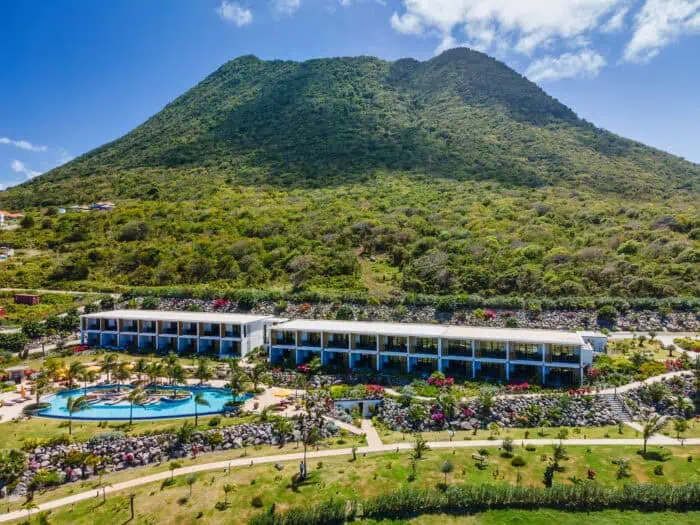
Golden Rock Dive and Nature Resort: Sustainability, Luxury, Adventure
After my arrival, I make my way “Behind the Mountain” (the address of my destination) along a one-lane road, the driver giving a customary honk to say hello to each passing car. Within 20 minutes, we reach the gates of Golden Rock Dive and Nature Resort. The first sight of the resort is striking – modern elegance seamlessly blended with lush, natural surroundings. The sprawling 40-acre property, equivalent to 32 football fields, is like a fortress of sustainability and luxury. It sits atop a cliff with panoramic views of the Atlantic. The Quill, a dormant volcano rising 1,972 feet (601 meters), adds a bold yet idyllic backdrop and provides rich nutrients for the lavish gardens and active greenhouse.
When I first learned about Golden Rock, “The Hidden Secret Gem Of The Caribbean,” I was intrigued by its off-the-grid ethos. Solar power is harnessed at their 2,240-panel solar park, and freshwater is supplied entirely through a desalination plant. Grey water from showers and sinks is filtered and irrigated in the gardens and greenhouse.
The resort touts an approachable luxury with a fantastic assortment of modern amenities and activities, including Bobbie’s Beach Club, the largest man-made lagoon in the Caribbean, two restaurants, two saltwater pools, and an extremely friendly staff to help create an authentic experience.
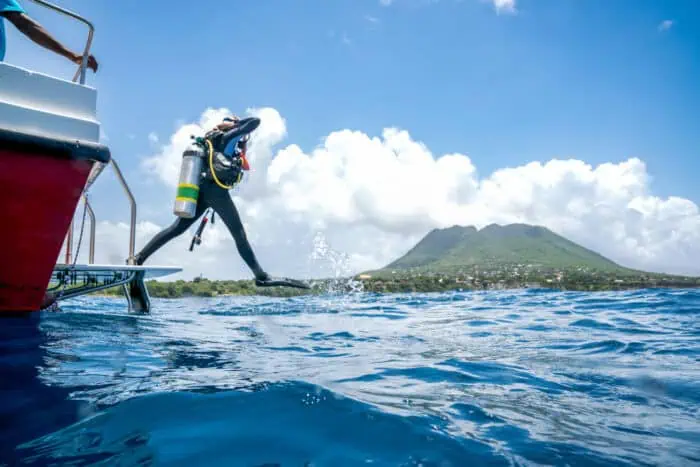
Venture Into The Unknown With Statia Divers
Earlier this year, Golden Rock launched its newest endeavor: Statia Divers, a PADI Dive Center and Scuba School. This state-of-the-art dive center, which debuted at the DEMA Show 2023, is tailored to accommodate every level of diver and varying interests through a comprehensive valet service. They offer complimentary Nitrox for EANx divers and trips on their two new dive boats, ensuring a top-notch diving experience. Statia Divers provides a full range of PADI courses, from Discover Scuba Diver and Bubblemaker to Divemaster. The facility is impressive, with a spacious layout, cinema, dedicated camera room, and a repair room to ensure all equipment is in prime condition. I opted to rent gear, especially since I had an insider tip: Statia Divers has a brand-new line of SCUBAPRO equipment in their rental fleet.
Daniel and Kate manage the operation, working in destinations from the Bahamas to Indonesia and Malapascua. The duo is not only professional and welcoming but also fun. Ask Kate if there are going to be sexy shrimp on a dive, or mention The Humps dive site, and she is sure to have a song or dance accompanied by her enduring smile. They prep and transport all the gear, towels, snacks, and refreshments, and then we go to the harbor.
Stormy is waiting for us. She is a fiberglass pontoon that comfortably fits 12 to 18 divers. The first dive at the Aquarium is a mere 15 minutes. All sites are only a 5-to-20-minute ride. As the name suggests, this site has a dense variety of life. Pinnacles rise from the seabed infiltrated by garden eels and massive stingrays. The surfaces covered in soft coral are crowned with huge barrel sponges swarming with tropical fish. Distracted by ghost shrimp dancing over an anemone, I peer up to see the tail end of a green turtle jet past. Four turtle species (hawksbill, green, loggerhead, and leatherback) nest on the volcanic sand beaches, making for regular sightings.
STENAPA Reef is an artificial reef where fishermen can catch lobster and conch. It consists of multiple wrecks surrounded by rolling seagrass, making the rectangular barge look like an estate propped in the verdant hills of Scotland but 70 feet underwater. Peering through the 40-foot pipe, I see the inside slathered with corals. An open hull offers a sanctuary for a group of squirrelfish who appear frozen as I float by them. Though my favorite piece is the fully intact tugboat whose bow and wheelhouse look like an explosion of sponges, it is so densely decorated. It’s a fun dive with much to see, and I could have happily done two dives here.
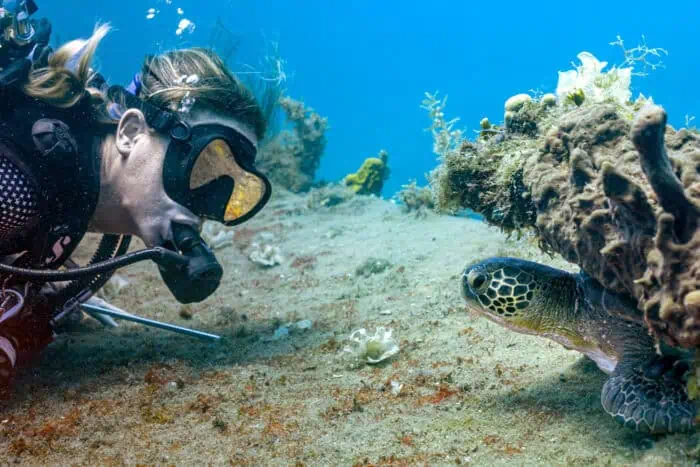
Statia has two major shipwrecks I don’t have time for on this trip. The Chien Tong, a 170-foot (52m) Taiwanese fishing boat sunk in 2004, sits perfectly upright at 80 feet (24 meters) and is commonly frequented by turtles, especially at night as they rest. The Charles L. Brown is one of the largest wreck sites in the Caribbean: 320 feet (98 meters). Before being purchased by Statia for $1 USD and sunk in 2003, she served to lay telecommunication cables across the globe. She rests on her starboard side at 100 feet (30 meters).
Historical wreckage and artifacts such as ballast stones, cannons, or anchors are common sights. Of course, removing or touching anything is forbidden, so a no-gloves policy has been implemented. The Statia Blue Beads are the only items that can be taken. They are found on several sites, especially at Blue Bead Hole, or may even wash up on shore. Alas, I am not one to find an iconic blue bead, or, according to lore, it finds me.
But I find comfort in outdoor dining. Bobbie’s Beach Club is the resort’s lively adventure hub at the edge of the resort, 85 feet (26 meters) above the sea. It features a family-style restaurant with fusion cuisine, cocktails, and stunning views. It was difficult selecting from the hand-crafted pizzas, open grill selection, or sushi from a “Nobu”-trained chef. Breeze, the resort’s flagship restaurant, offers upscale dining in the heart of the property. It’s an open-style building designed to function like a giant fan. Generally, the temperature is comfortable, thanks to the reliable breeze across the island.
After a filling meal and a good night’s rest, the natural light from the early sunrise gently wakes me. The room is spacious, and like all 70 rooms, I have a private balcony with views of the ocean and gardens.
To start our day, we set off for Blair’s Reef. This was a secret site to hunt lobster, named in honor of a local fisherman who is Captain Gadget’s uncle.
Daniel sits with his whiteboard, drawing the dive site. “It’s art therapy,” Kate boasts. Corals are purple, and lava formations are orange dry-erase markers. Scribbled at the top, our dive profile reads:
45 mins / 700 PSI Blair’s Reef 67 ft
This reef consists of two ancient lava flows with a big lava block formed by the now dormant Quill. The rich volcanic nutrients make for healthy corals like giant barrel sponges big enough to curl up inside and gorgonians reminiscent of trees swaying in the wind. They have seen eagle rays and shared rumors of a tiger shark, but not today. It’s a small site, though circling it twice at different depths offers a chance to see the variety of life hidden in the many cracks and underhangs. One crevice we hover over is packed with giant Caribbean lobster, easily larger than my thigh, combatively waving their antennas. There are many indications that the reef is healthy, though at this moment, there is a covering of purple Muppet-like algae.
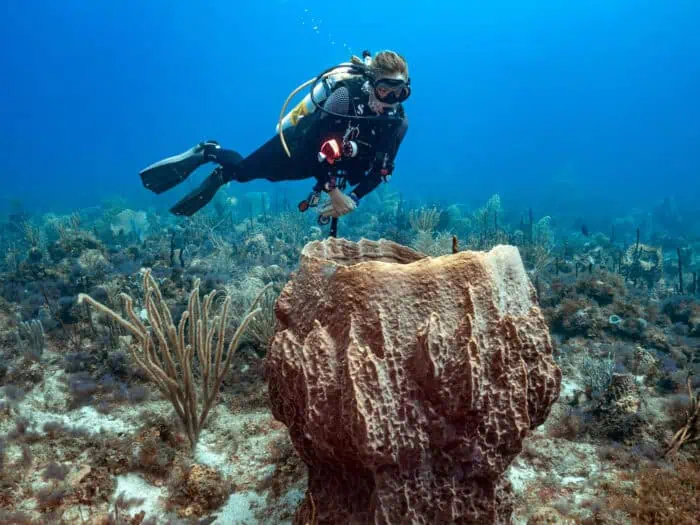
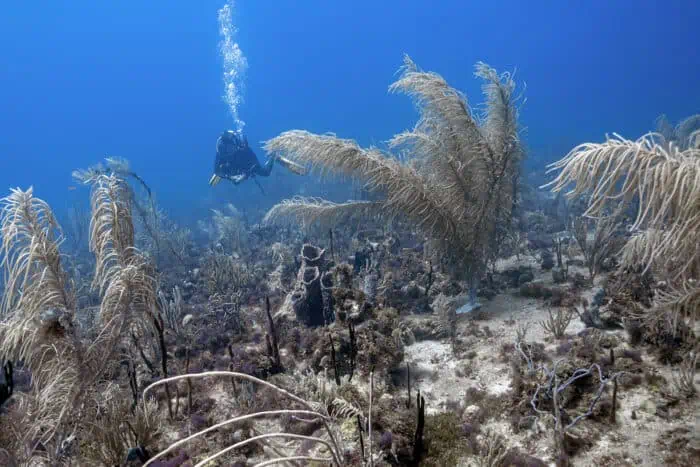
Splashing for the next dive, I squeal. I can perfectly see the ripples of sand 52 feet below. Here, the sandy bottom surrounds a big plateau of coral that leads to 3 huge mounds created from lava bombs – fragments erupted from the volcano – The Humps. It’s an easy, shallow dive and simply beautiful. The purple sea fans and flowing soft coral pulsing with schooling grunts, yellowtail snapper, and blue runners contrast the clear blue water. Garden eels, stingrays, and peacock halibut animate the sand. Huge parrotfish whose vibrant coloring seems to flicker as they twist and turn, positioning themselves to feast on the reef with the loudest crunch. I hear the clanking of a tank but resist looking. I’m not ready to be given a thumbs-up.
The diversity in sites so close to each other, even within a dive, is incredible. We stay on the island’s western side, which is sheltered with calmer conditions. A few permitted dive sites are on the eastern edge, the Atlantic side. Of course, these are longer to reach, and I am informed that they have primarily hard corals like staghorn, elkhorn, and brain corals.
I spend my final afternoon with Miss Misha touring Upper Town in Oranjestad, the Capital and only city. Her Statian roots, combined with her passion, knowledge, and respect for the island, run generations deep. Misha shares tales about the plantations and the slave market that later evolved into a place for music and singing, the tiny paper corner store that housed two families with up to 14 children each, selling rum, and the seldom-used courthouse.
Ending at Fort Oranje, among the cannon garrisons lining the fortress where the First Salute was fired, we gaze out over the harbor. The bell ringer arrives, and after six loud clangs, the flags are lowered — St. Eustatius, then the Netherlands. I walk down the steep trail known as the Slave Path to the single road along the water’s edge. I dine at the Barrel House near a small strip of beach, absorbing the sun’s last minutes. A few yachts and commercial ships dot the horizon, and I imagine, for a moment, a lively port with 100s of ships.
When I first met Sally in November 2022, she said, “It really is such an escapism where you can get back to nature and just wind down and really enjoy a diving vacation.”
And that’s exactly what I did.
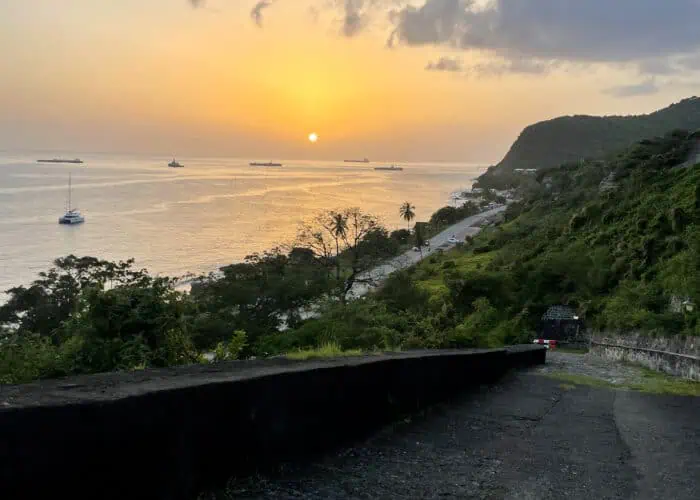
GOOD TO KNOW
Getting Here
Traveling to Statia generally means taking a connecting small flight or ferry from one of the neighboring islands.
- Maarten (SMX) – many international flights regularly land here. Then, it’s an 18-minute flight on Winair to St. Eustatius (EUX).
- Makana Ferry – 72’ Saber catamaram from Saba, St. Maartan and St Kitts. However, check the schedule, as the service is not offered daily.
- Golden Rock Resort can assist with ferry accommodations and provides complimentary service for all Statia airport and seaport transfers to the resort.
A departure tax of $15 USD per person is required when leaving.
Best Time To Go
Diving is good year-round. January to June is a dry season, and rain is less likely.
Conditions
Warm, tropical climate all year with cool trade winds regularly sweeping the island. Air temps are in the upper-70s °F (~25 °C) in January to high-80s (~30 °C) in summer. Water temps range from mid-to-high 70s °F (26-27 °C) in winter up to 89°F (28-30 °C) in summer. Visibility depends on the site, ranging from 30-50 feet (9-25 meters) in the bay to over 100 feet (30 meters) on the offshore sites. A 3mm wetsuit will be adequate for most divers.
Diving
Suitable for all levels of divers. A Nitrox certification is recommended.
Currency
They use the U.S. Dollar. Cash is preferred as many local vendors do not accept credit cards.
Electricity
110 volts, 60 cycles. The plugs tend to be two flat prongs, similar to the U.S. standard.
Language
Dutch is the official language, though most people speak English. It’s likely to find that most people speak multiple languages, including Papiamento – the local Creole language.
More Information
The Golden Rock Dive & Nature Resort is a 5-star, eco-luxury retreat on St. Eustatius, offering luxury accommodations and scuba dive packages. Rooms range from cottages to suites. Custom Stay and dive packages are available and can be tailored to create an authentic experience. Groups are welcome.

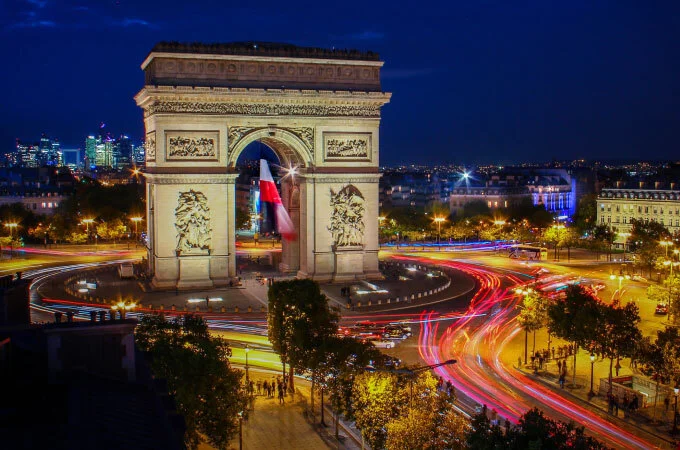
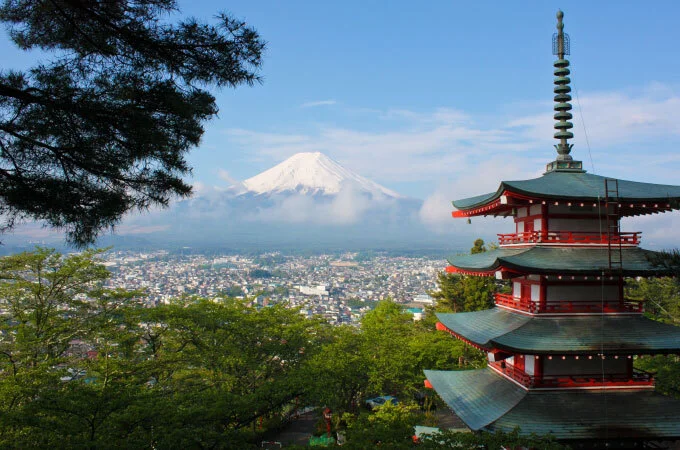

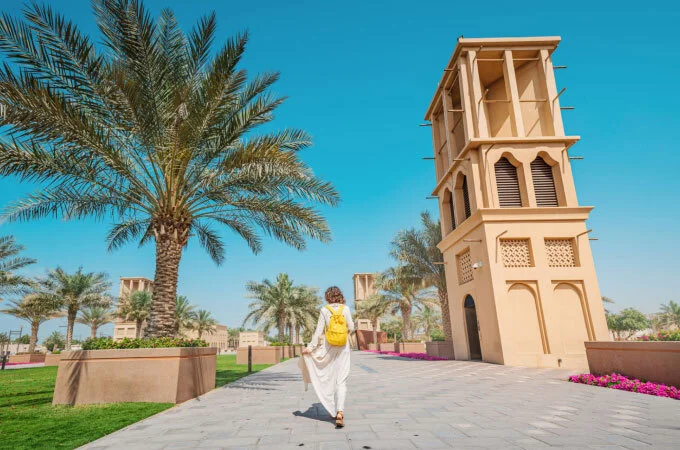
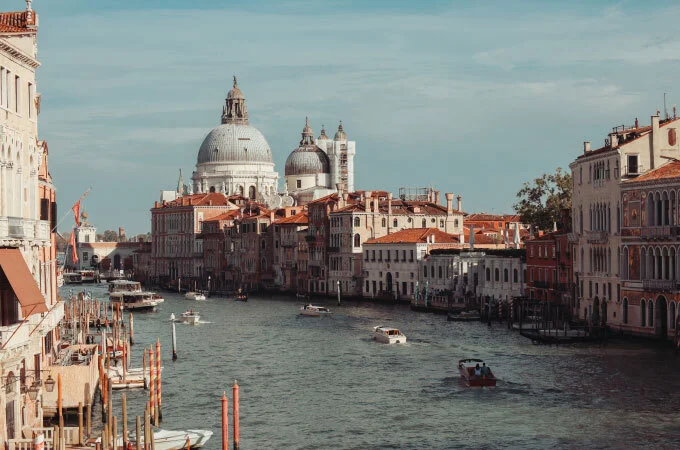



:focal(1160x380:1162x378)/origin-imgresizer.eurosport.com/2024/09/23/4043858-82014808-2560-1440.jpg?w=150&resize=150,150&ssl=1)
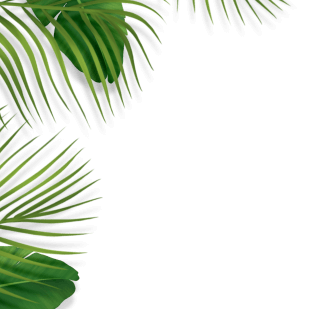
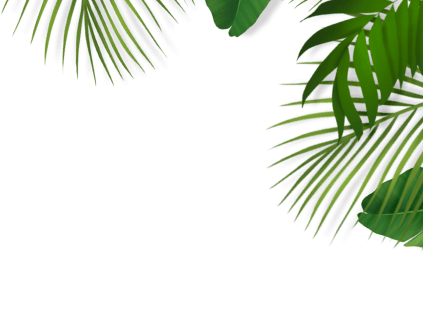
Leave a comment:
You must be logged in to post a comment.